Irvine Bypass Trunk Main (2017)
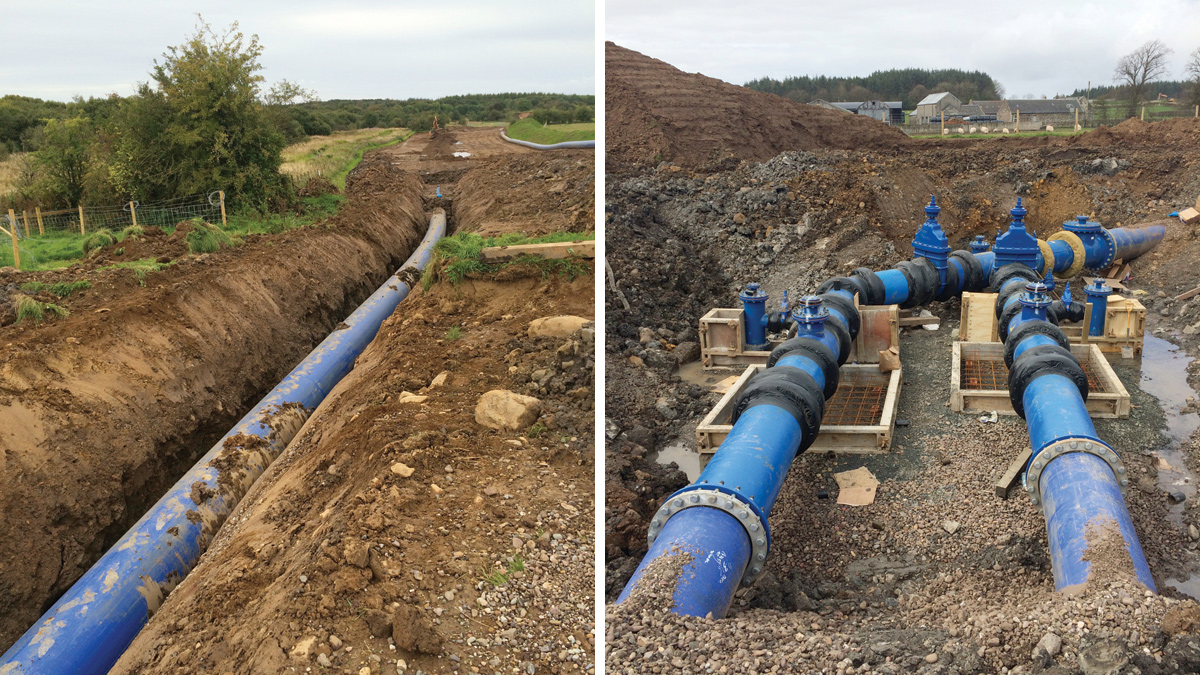
(left) Pipe installed and (right) Valve arrangement - Courtesy of Caledonia Water Alliance
An existing, but ageing, 33”-36” diameter potable water main supplying over 40,000 customers in Ayrshire was identified by Scottish Water as requiring replacement. The existing pipeline was to be replaced with a new pipeline constructed of polyethylene (PE) pipe sections butt-fusion welded into 200m long pipe strings. Caledonia Water Alliance (CWA), a joint venture between AECOM and Morrison Utility Services, is working in partnership with Scottish Water to self-deliver a £22m full design and build solution for a 12km long trunk main bypass. CWA developed the initial design concept through to the construction phase and at the time of writing (July 2017) is working on completing the installation of 800mm and 710mm diameter PE pipe sections and progressing tie-in connections to Scottish Water’s network.
Pipeline design: Engineering constraints & challenges
CWA developed and assessed route options and considered alternative pipeline materials for the project. Following the selection of the pipeline route from the alternatives identified in the earlier stages, the site investigation works and detailed design process factored in a number of engineering challenges to be addressed, including:
- Confirmation of a viable route for the new main across areas of historic mine workings.
- Avoidance of potential unexploded ordnance to the south of the scheme, which is in close proximity to the former RAF Dundonald site; a World War II RAF airfield.
- Refinement of the route through Eglinton Country Park whilst mitigating potential impact on the general public and normal daily operational running of the park.
- Solutions for five major tunnel crossings comprising a mixture of trunk roads, rivers and a railway line.
- No-dig solutions for the crossing of a further five minor roads and access tracks.
- Working closely with national utility companies to agree engineering detail for the crossing of live utility apparatus including high pressure gas mains.
- Laying large diameter water main across a flood plain in poor, saturated ground conditions.
- Connections to existing large diameter water mains, including 33” and 36” diameter mains.
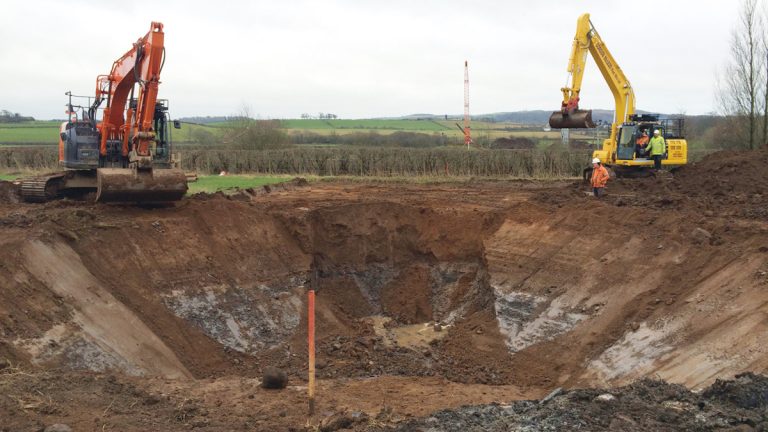
Trunk road crossing reception pit construction – Courtesy of Caledonia Water Alliance
Planning of connections to the existing 33”-36” diameter water main presented significant challenges. CWA’s project team worked closely with Scottish Water to agree a proposal to bring water from an adjacent water supply zone to provide a contingency backfeed to Scottish Water customers in the Irvine area so that no interruption to their water supply would be experienced.
This approach reduced the risk associated with making under-pressure connections onto large diameter live mains and also enabled the scheme to be modified, thus reducing the overall length of the pipeline by approximately 2km and resulting in a considerable cost saving of over £2m.
Enabling works to support this reduced risk approach included:
- 200m link main.
- Pressure Reducing Valve (PRV) installations.
- Mains conditioning.
- Flow reversals.
CWA’s project team worked closely with colleagues in Scottish Water to agree a number of value engineering initiatives which contributed to a further £1.5m cost saving against the original budgeted costs:
- The original planned 1000mm diameter main was downsized following additional network modelling, verification works and changes to the network operating philosophy to provide increased resilience within the water supply zone.
- Adoption of single tunnel options incorporating twin mains for crossings to achieve duplication in the event of any operational issues with the mains supply, which is augmented with additional valving and changes to the wider operational network to improve resilience and bi-directional flow capability should a section of the main require to be isolated for any reason.
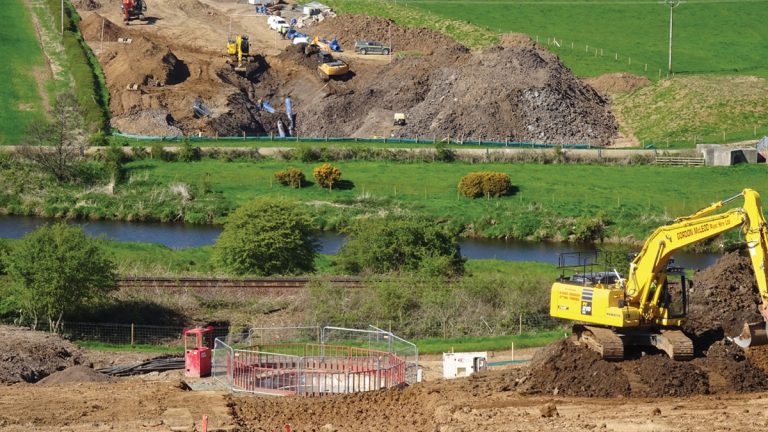
River-railway line tunnel crossing – Courtesy of Caledonia Water Alliance
Pipeline construction: Environmental constraints
Aside from purely the engineering constraints, CWA’s project team has also been faced with an environmental constraint delaying proceedings with some of our pipe-laying activities. A small colony of sand martins elected to nest on both banks of an excavation, on a flood plain near the Garrier Burn. A dewatering system had been installed at this location and was in operation for several weeks, well in advance of the arrival of the birds. Had the dewatering system not been in operation, then there would not have been the open, sandy banks for them to nest in.
Breeding birds are protected in law and with no mechanism to gain permission to disturb them, the birds and nest sites must be left undisturbed until the chicks have fledged. Therefore, the use of heavy machinery at this location must be prohibited until fledging is complete.
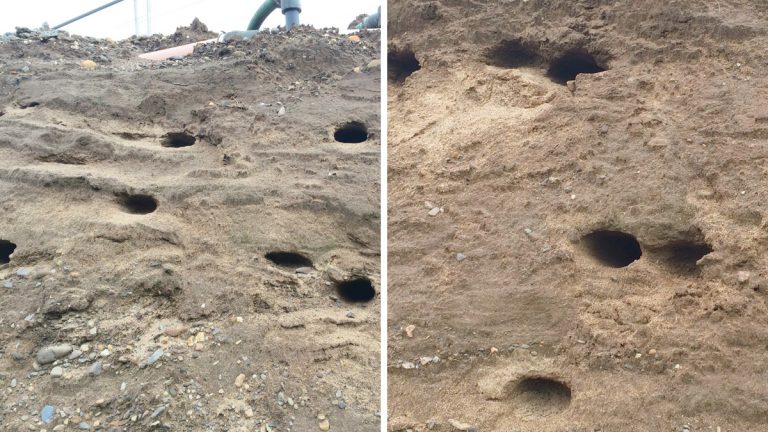
Sand Martin nests – Courtesy of Caledonia Water Alliance
As dewatering pumps are already operating at the location, the sand martins will be used to being exposed to a certain level of disturbance from the pumps. CWA’s team was able to undertake some work, providing any disturbance from our activities were kept to a minimum.
Removal of the dewatering system would return the land to running sand, filling the excavated area and resulting in the nest sites being flooded out. Operating dewatering pumps may be considered a disturbance to nesting sand martins; however the birds were obviously appreciative of the dewatering efforts and seemed at home with the low droning noise level emitted from the silenced pumps, having chosen to colonise the area inside the system.
Sand martins are commonly known to have two clutches per year, and is takes around six or seven weeks from laying to the chicks fledging the nest. Based on the timings of the sand martins taking up residence within our site, it resulted in an unwanted delay to aspects of our work for up to 12 weeks.
CWA are investigating/implementing additional works to enable commissioning to continue without disturbing the birds. To enable our programme of works to be restarted as soon as possible, CWA in conjunction with Scottish Water’s Specialist Services Team, arranged for an ecological survey to be carried out. Around 50 nests were identified and a monitoring strategy developed to keep up to date with the activity of the birds. Only once all chicks have fledged will works be permitted to resume.
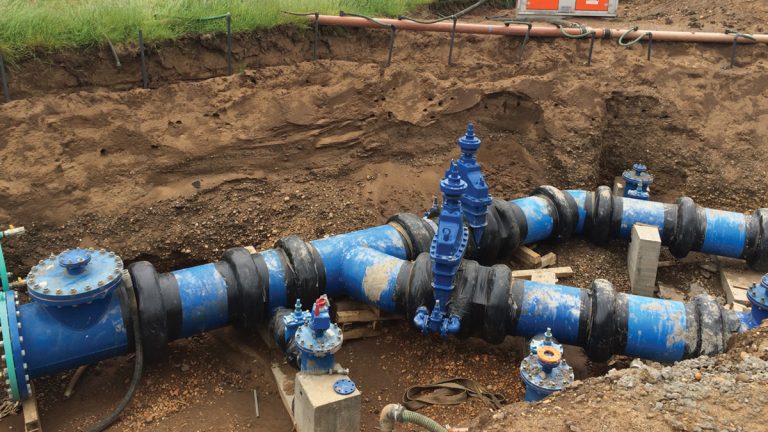
Dewatering system – Courtesy of Caledonia Water Alliance
Pipeline construction: Tunnelling
Each of the tunnels in the scheme are of similar construction, comprising 1500mm internal diameter reinforced concrete tunnel pipes, carrying twin 630mm diameter PE water mains.
The valving arrangements at each side of the tunnel sections connect the twin pipes to the 800mm diameter PE pipeline sections and enabled multiple valving options. Depending on depth and ground conditions, the tunnel drive and reception pits are either 6m diameter circular precast concrete segmental rings or purpose-designed sheet pile cofferdams. The tunnels range in length from 153m to 360m, with the total length of installed tunnel being 943m of bifurcated 630mm outside diameter PE pipe.
CWA supported by Scottish Water, negotiated with third party stakeholder, Network Rail, through their formal process of requesting and subsequently securing the required permissions to enable the railway crossing to go ahead in conjunction with the tunnel crossing of the River Irvine. Negotiations were also successfully completed with third party stakeholder, Scottish Gas Networks for permission to tunnel under a strategic asset near the Garrier Burn.
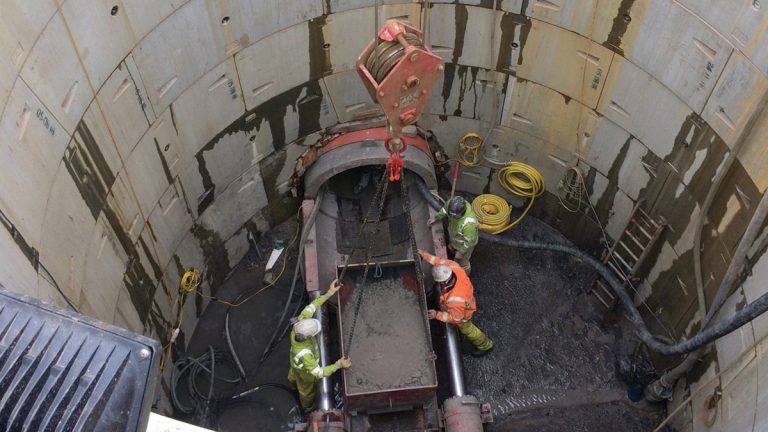
Tunnel drive shaft – Courtesy of Caledonia Water Alliance
In addition to tunnel crossings of the major obstacles such as trunk roads and the railway line, a number of minor roads were also traversed utilising a no-dig approach – in this case the installation of a steel culvert using a guided auger. This approach was adopted by CWA for two reasons: safety in construction and reduced disruption to the general public. This included a diversion looping of a low pressure gas main prior to the auger bore crossing of one of the minor roads.
Specialist subcontractors were enlisted to undertake tunnel related drilling and boring activities. Active Tunnelling Ltd. was appointed to undertake the tunnelling and similarly, AE Yates Ltd. was appointed to undertake the auger boring.
Pipeline construction: Practical challenges & progress to date
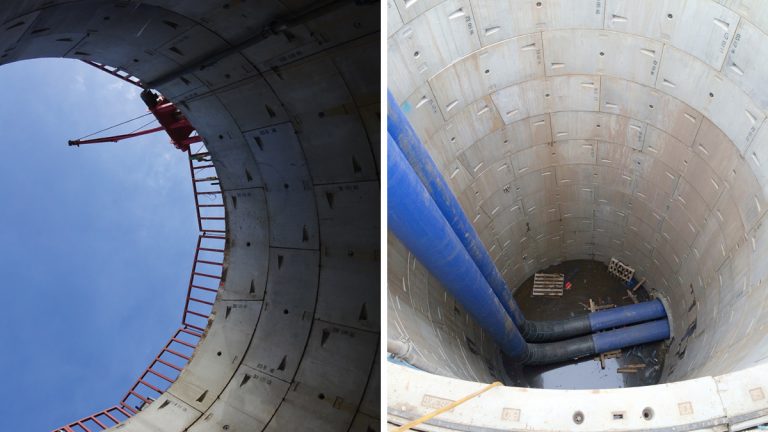
Tunnel drive shaft – Courtesy of Caledonia Water Alliance
Full mainline construction activity on the new 800mm and 710mm diameter PE pipelines began in June 2016 and is being self-delivered by CWA. Production rates have generally been excellent and the installation of 11km of mainline pipe and 900m of spur pipelines was complete by June 2017. Installation of the five reinforced concrete tunnel crossings has been ongoing in parallel to the main pipe-laying activities.
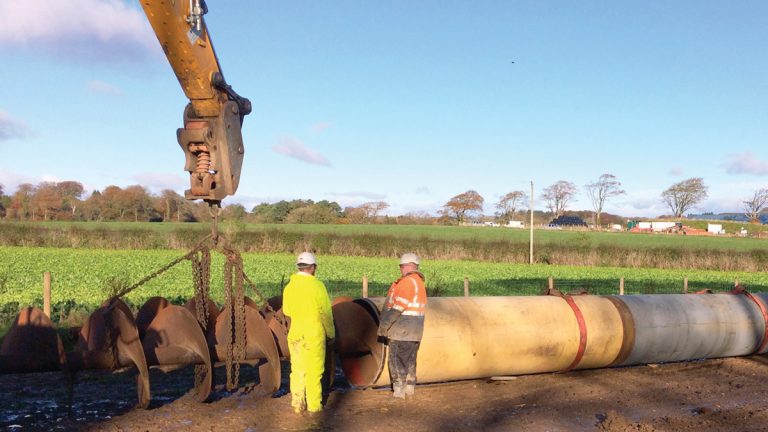
Auger bore setup – Courtesy of Caledonia Water Alliance
The project team is focused on completing the testing and commissioning sequence, which is complex and includes the key connections at either end of the water main and two intermediate connections into local District Metered Areas. This requires a significant change to the network operating philosophy in a number of areas and CWA’s team is working closely with Scottish Water to plan these works whilst maintaining a quality supply of potable water for Scottish Water’s customers in Ayrshire.
Planning of the commissioning of the new water main is well advanced and beneficial use is anticipated in late Autumn 2017. Once the new water main is commissioned and operational, it will run in parallel to the existing water main for a set proving period, before the existing, ageing main is taken out of service and decommissioned.
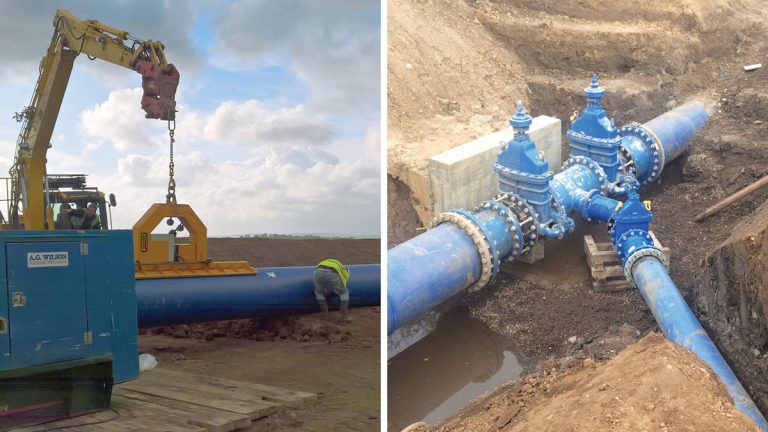
(left) Vacuum pipe lift and (right) off-take connection arrangement – Courtesy of Caledonia Water Alliance
The delivery of the project from inception to commissioning will have taken around two and a half years and is a credit to all involved from both CWA and Scottish Water, in being able to maintain the fast track programme whilst balancing sensitive third party stakeholder issues.






